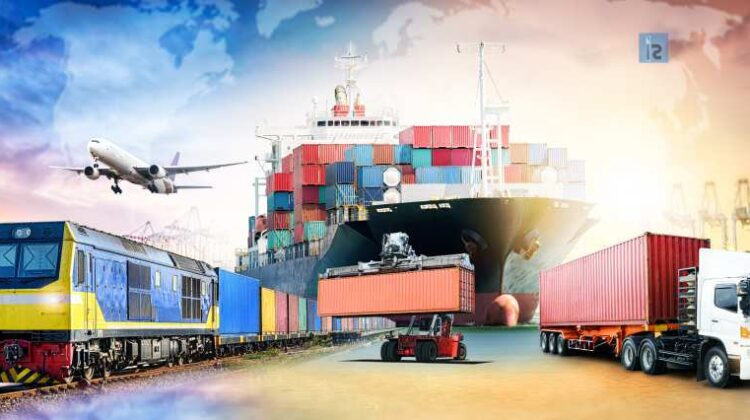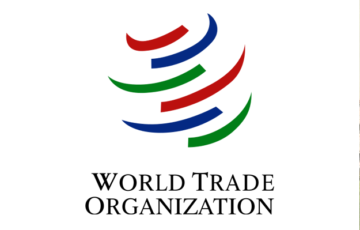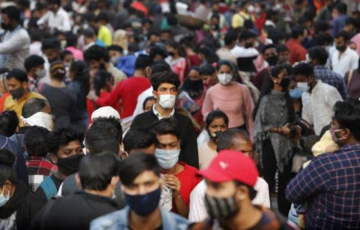LOGISTICS SECTOR
Logistics and its Scope
- Logistics encompasses the strategic management of goods movement from their origin to the destination, aiming to meet consumer demands efficiently and cost-effectively. This broad field covers activities from the end of the manufacturing process to the delivery of goods, playing a pivotal role in trade, transportation, and commerce. Effective logistics is crucial for enhancing export competitiveness, underlining the importance of a robust logistics framework for economic success.
Objectives of Logistics Management
Enhancing Supply Chain Efficiency
- Logistics management streamlines the import and export processes, improving supply chain visibility, reducing overhead costs, and ensuring timely delivery operations.
Inventory Control
- Effective inventory management is essential for maintaining optimal stock levels and meeting end-user demands, reducing the risk of stockouts and minimizing excess inventory costs.
Minimizing Product Damage
- An efficient logistics management system minimizes the risk of product damage through proper monitoring, packaging, and handling practices.
Customer Satisfaction
- The ultimate goal of logistics is to satisfy customer demands through efficient planning of inventory and transportation, leading to prompt delivery of goods.
Reducing Operational Costs
- Adopting logistics management practices helps businesses cut down on supply chain operating costs, thereby boosting revenue.
Quality Assurance
- Incorporating advanced technologies in logistics activities ensures quality assurance, a key aspect of logistics management objectives.
Reducing Carbon Footprint
- Logistics strategies aim to minimize environmental impact by optimizing routes, automating processes, and adopting eco-friendly practices to reduce emissions.
Logistics Sector: Data and Insights
- The logistics sector, employing over 22 million people, is integral to India’s economy. An upgrade in this sector could significantly reduce logistics costs from 14% to 10% of GDP, boosting exports by 5-8%. Currently valued at $160 billion, the sector is expected to grow to approximately $215 billion in the next two years, indicating its vast potential for further development.
Significance of the Logistics Sector
Reduction in Agricultural Losses
- Improving logistics can significantly reduce losses in the agricultural and food processing industries, highlighting the need for efficient transportation and infrastructure.
Integrated Multi-Modal Transport Planning
- Developing an integrated transport system that combines different modes of transportation can enhance efficiency, safety, and environmental sustainability.
Employment Opportunities
- The logistics sector is a significant employment generator, with an estimated 45 million people working in this field.
Support for the Agricultural Sector
- Logistics plays a crucial role in the agricultural sector by reducing costs and increasing market demand for agricultural products.
Export Competitiveness
- A robust logistical network and transparent trade facilitation are key drivers of a country’s export competitiveness.
Manufacturing Sector Support
- The logistics sector facilitates the efficient movement of goods, essential for the manufacturing and other commercial sectors.
Environmental Impact
- Improving logistics can lead to significant environmental benefits by reducing emissions and promoting eco-friendly transportation solutions.
The Future of Logistics
- The logistics sector stands at a critical juncture, with the potential to significantly impact India’s economy, environment, and societal well-being. By addressing current challenges through technological advancements, policy reforms, and sustainability practices, the sector can achieve its objectives of improving efficiency, reducing costs, and enhancing customer satisfaction. The future of logistics promises not only economic growth but also environmental sustainability and enhanced global competitiveness, making it a key focus area for development in the coming years.
Issues and Challenges
High Cost of Logistics
- Access to Finance and Infrastructure: Financial constraints, insufficient infrastructure, weak connectivity, and an unfavorable modal mix contribute to the high cost of logistics in India.
Coordination Challenges
- Multiple Stakeholders: The logistics sector involves various stakeholders regulated by different departments, leading to coordination difficulties and redundant processes.
Lack of Interoperable Technology
- Connectivity and Infrastructure Gaps: The absence of last-mile connectivity and inadequate infrastructure hinders the seamless transportation of goods across different modes.
Competition and Capacity Utilization
- Unequal Playing Field: Benefits provided to the public sector that are not available to private entities lead to reduced competition, underutilized capacity, and inefficiencies.
Warehousing Issues
- Capacity and Fragmentation: With limited warehousing capacity and a predominantly fragmented structure, the sector suffers from minimal value addition and remains largely unmechanized.
High Dwell Time and Cross-Mode Movement
- Infrastructure and Connectivity Shortfalls: These issues further complicate the efficient cross-mode movement of goods.
Border Compliance and Document Processing
- Inefficiencies in Trade Processes: Lengthy border compliance and document processing times for both imports and exports hamper the sector’s efficiency.
Inadequate Funding
- Financial Support: Although logistics is now classified as part of the infrastructure sector, accessing long-term funding remains a challenge.
Safety Concerns
- Risks in Logistical Operations: Practices such as truck overloading pose significant safety risks.
Way Forward
Reducing Logistical Costs
- Boosting Competitiveness: Lowering logistical expenses is crucial for enhancing the competitiveness of goods and services, which in turn can stimulate trade and economic growth.
Innovation and Technology
- Tech Implementation and Investment: Emphasizing the adoption of new technologies, increasing investments, and fostering skill development are key to minimizing bottlenecks and improving intermodal transportation.
Regulatory Reforms
- National Logistics Law: The development of a unified legislative framework aims to create a more adaptable regulatory environment for the sector.
Liberalized Regulatory Framework
- Sector Development: Liberalizing regulatory frameworks to support the logistics sector, including revising tariff policies and air rights norms.
Capacity Building
- Educational Initiatives: Establishing Centres of Excellence and promoting skill development courses are strategies to enhance the logistics workforce.
Policy Flexibility
- Attracting Private Investment: Implementing policies that allow for asset recycling and extended concession periods can attract more private sector investment.
Inter-Ministerial Coordination
- Multi-Modal Connectivity: Ensuring coordination among various ministries is essential for achieving seamless connectivity and timely clearances.
Financial Models
- PPP Concessionaires: Developing viable financial models and improving credit availability are crucial for the sector’s growth.
Impact on Exports
- Export Boost: Improving logistics efficiency can significantly enhance export performance, with a potential increase of 5-8% following a 10% reduction in indirect logistics costs.
Tax Rationalization
- GST and Logistics Division: Tax reforms and the establishment of a dedicated Logistics Division are steps towards simplifying the tax landscape for the logistics sector.
Integrated Logistics Policy
- Sector Performance Assessment: The development and implementation of an Integrated Logistics Policy are crucial for periodically evaluating and enhancing the sector’s performance.
GOVERNMENT STEPS
Budgetary Allocation
- The Union Budget 2021–22 marked a significant increase of 34.5% in capital expenditures across various ministries, totaling Rs 5.54 trillion. This increase underscores the government’s commitment to bolstering the infrastructure necessary for efficient logistics and transportation.
GST and E-Way Bill System
- The implementation of the Goods and Services Tax (GST) and the electronic Way (e-Way) bill system has streamlined the logistics and transportation industries, reducing truck turnaround times by approximately 20%. This has made the movement of goods more efficient across states.
Geo-tagging and Warehousing
- The government’s initiative to geo-tag all warehousing facilities aims to ease access to cold storage or warehouses for farmers, promoting efficiency and reducing transportation costs. The Village Storage Scheme further supports this by providing backward linkages through women’s self-help groups.
Refrigerated Transport and Krishi Udan Scheme
- To aid the transport of perishables, the government has proposed adding refrigerator vans to passenger trains and launched the Krishi Udan scheme for air-route delivery of perishable goods, enhancing the supply chain for horticulture products.
Development Initiatives
- Projects like the National Organic e-Market, expressways connecting major cities, and the establishment of 100 more airports under the UDAN scheme are aimed at improving connectivity and facilitating trade.
- The National Committee under the Cabinet Secretary and the Ministry of Commerce and Industry’s efforts to develop an integrated logistics portal are steps toward creating a more cohesive and efficient logistics ecosystem.
Financing and Regulatory Measures
- Including the logistics sector in the Infrastructure Sub Sector Harmonised Master List allows for access to lower-cost, long-term financing and streamlines the approval process for developing Multimodal Logistics Parks.
Infrastructure Development Programs
- Bharatmala Pariyojana and Sagarmala Programme are flagship initiatives aimed at enhancing road infrastructure and port-led development, respectively.
- The National Ropeways Development Program, or “Parvatmala”, and Mission Gati-Shakti, are designed to improve connectivity, especially in challenging terrains, through innovative and sustainable solutions.
Freight and Cargo Policies
- The development of Eastern and Western Dedicated Freight Corridors and the National Air Cargo Policy are initiatives to increase the efficiency of freight movement by rail and air, supporting the overall goal of making logistics more seamless.
Awards and Surveys
- Initiatives like the National Logistics Excellence Awards and the Logistics Ease Across Different States (LEADS) survey aim to recognize innovation and promote improvements across the logistics sector.
Legal and Policy Framework
- The proposed National Logistics Law and the Draft National Logistics Policy are in the pipeline to support the “One Nation-One Market” strategy and encourage efficient nationwide commodity transportation.
PM GATI SHAKTI MISSION
- The PM Gati Shakti Mission represents a transformative initiative by the Government of India to overhaul the country’s infrastructure landscape. Its primary objective is to foster holistic infrastructure development through improved coordination among various ministries and departments. This mission seeks to create a cohesive framework that supports the rapid, integrated, and efficient development of infrastructure projects across India.
Introduction to PM Gati Shakti Mission
- Launch and Purpose: Launched by the Indian Government, the PM Gati Shakti Mission aims to address longstanding challenges in infrastructure development, including inefficiencies and delays resulting from poor inter-ministerial coordination.
- National Master Plan for Multimodal Connectivity: At the heart of this mission is the National Master Plan for Multimodal Connectivity, a sophisticated digital platform that integrates efforts from 16 different ministries, including Roads and Railways, to ensure that infrastructure projects are designed and implemented in a coordinated and cohesive manner.
Objectives of PM Gati Shakti Mission
- Enhanced Multimodal Connectivity: By enabling smooth transitions between different modes of transportation, the mission aims to facilitate seamless movement of people, goods, and services across the country.
- Accelerated Infrastructure Development: It focuses on speeding up the completion of infrastructure projects, particularly those critical for achieving last-mile connectivity, thereby significantly reducing travel times.
- Integration of Various Plans: The mission integrates plans from various ministries and state governments, encompassing a wide array of projects like Bharatmala, Sagarmala, inland waterways, and UDAN, to name a few.
Impact on the Logistics Sector
- Improved Connectivity: By linking economic zones such as textile and pharmaceutical clusters, defence corridors, and industrial parks, PM Gati Shakti will enhance connectivity, thereby boosting the competitiveness of Indian businesses.
- Technology Utilization: The mission makes extensive use of advanced technological solutions, including spatial planning tools and ISRO imagery provided by BiSAG-N, to optimize planning and execution of infrastructure projects.
Benefits of PM Gati Shakti Mission
- Streamlined Project Implementation: By fostering better coordination among various ministries and leveraging cutting-edge technology, the mission aims to streamline the process of infrastructure development.
- Economic Growth: By improving connectivity and reducing transportation costs, the mission is expected to significantly contribute to economic growth, attracting more investment and creating numerous job opportunities.
- Enhanced Competitiveness: Improved infrastructure and logistics efficiency are poised to enhance the global competitiveness of Indian businesses, enabling them to expand their market reach and reduce operational costs.
Conclusion
The PM Gati Shakti Mission is a bold step towards revolutionizing India’s infrastructure development paradigm. By integrating and coordinating the efforts of various governmental agencies and leveraging technology, the mission sets the foundation for a more connected, competitive, and economically vibrant India. As it unfolds, its impact on the logistics sector and the broader economy is expected to be substantial, paving the way for a new era of growth and development.
New National Logistics Law
- The introduction of the New National Logistics Law, specifically the National Logistics Efficiency and Advancement Predictability and Safety Act (NLEAPS), represents a significant shift in the regulatory framework governing logistics and transportation in India. This legislative move, spearheaded by the Ministry of Commerce and Industry, aims to overhaul the existing Multimodal Transportation of Goods Act, 1993 (MMTG). NLEAPS is designed to streamline regulations, address supply-side issues, reduce logistical costs, and enhance the global competitiveness of Indian products.
Objectives of NLEAPS
- Enhancing Trade Competitiveness and Economic Growth: By improving efficiency and reducing costs in logistics, NLEAPS aims to make Indian products more competitive on a global scale.
- Promotion of Digitization and Modernization: The act seeks to modernize logistics services through digitization, facilitating the efficient movement of goods.
- Reducing Logistics Costs: A critical objective is to lower the cost of logistics from the current 14% of GDP to below 10% by 2022, making the logistics sector more efficient and less burdensome for the economy.
Significance of NLEAPS
- One Nation-One Contract: It proposes a unified legal framework that simplifies the regulatory environment across the nation, streamlining operations across various transport modes.
- Facilitating Ease of Doing Business: By integrating technology platforms, documents, and stakeholders, NLEAPS aims to simplify operations and improve the ease of doing business in India.
- Promoting Employment and Growth: The act is designed to skill-up the workforce in the logistics sector, aiming to double employment and create an additional 10-15 million jobs while promoting gender diversity.
- Improving Global Rankings: Effective implementation is expected to boost India’s competitiveness in exports, trade, and elevate its position in global indices related to ease of doing business and logistics performance.
Concerns In Indian Logistics Laws
- Liability Issues: Differences in liability across unimodal and multimodal transport contracts complicate insurance and legal accountability.
- Disparate Legal Frameworks: The MMTG Act applies only to international carriage, leaving domestic logistics under a patchwork of unimodal regulations.
- Divergent Definitions and Documentation: Varying terminologies and document requirements across transport modes hinder the efficiency of logistics service providers.
- Inconsistent Dispute Resolution: Varied forums for dispute resolution and differing legal requirements across modes add complexity to resolving logistics-related disputes.
Resolution of Issues in The New Bill
- Uniform Liability System: It standardizes liability across all domestic transportation modes, simplifying legal and insurance processes.
- Unified Definitions: The bill introduces uniform definitions and terms to streamline documentation and services across the logistics sector.
- Consolidated Logistics Document: A single logistics document will replace multiple unimodal documents, facilitating easier and more efficient handling of goods.
- Uniform Dispute Resolution: The introduction of consistent dispute resolution principles aims to bridge gaps between unimodal and multimodal contracts, ensuring smoother legal processes.
Multi-Modal Logistics Park in Assam
- The foundation for India’s first MultiModal Logistics Park (MMLP) at Jogighopa, Assam, marks a significant milestone in the country’s logistics sector. This initiative under the Bharatmala Pariyojana project demonstrates a strategic move to enhance the logistics and transportation infrastructure in the northeastern region of India.
Features of the Park
- Project Overview: The MMLP in Assam is a pivotal project with a budget of US$ 407 million, aimed at transforming the logistics landscape of the region.
- Employment Generation: Expected to create around 2 million direct and indirect job opportunities, the park is a significant step towards employing the youth in the North East.
- Capacity and Cost Reduction: With a cargo capacity of 13 million metric tonnes, the park aims to reduce trade costs by 10%, streamlining logistics operations and making them more efficient.
- Infrastructure and Facilities: Spread over 317 acres, the park will host a comprehensive range of facilities including warehouses, cold storage, petrol pumps, custom clearance houses, and more, integrating all essential logistics services in one location.
- Accessibility: The strategic positioning of the park ensures direct access from major transportation nodes, including the newly built airports, National Highway 17, the proposed Jogighopa Brahmaputra waterway terminal, and primary railway routes.
- Timeline: The ambitious project is expected to complete its first phase by 2023, setting a rapid pace for development and operationalization.
National Logistics Policy (NLP) 2022
- Recognizing the challenges of high logistics costs and inefficiencies in India, the Union Finance Minister Nirmala Sitharaman announced the need for a comprehensive National Logistics Policy during the Union Budget 2020-21 speech.
Aims and Objectives
- The NLP aims to ensure the seamless movement of goods and services across the country, significantly reducing logistics costs from the current 13-14% of GDP to a single digit in the coming years. This reduction is crucial for enhancing the competitiveness of Indian goods both domestically and internationally.
Need and Importance
- Reducing High Logistics Cost: Addressing the high logistics cost is critical for improving the overall efficiency and competitiveness of the Indian economy.
- Enhancing Competitiveness: Lowering these costs is essential for making Indian products more competitive in both domestic and global markets.
- Boosting Efficiency: The policy focuses on boosting efficiency across various economic sectors, fostering value addition and enterprise.
Unified Logistics Interface Platform (ULIP)
Launch and Purpose
- Launched by Prime Minister Narendra Modi in 2022, the ULIP is a groundbreaking component of the National Logistics Policy, designed to revolutionize the logistics sector by eliminating monopolies and ensuring a level playing field.
Features and Benefits
- Integration: ULIP integrates 30 systems across seven ministries through over 100 APIs, covering more than 1600 data fields, thereby facilitating seamless information flow.
- Efficiency Enhancements: The platform offers numerous benefits, including single-click verification of driver and vehicle details, consignment tracking, route optimization, and inventory management, significantly reducing paperwork and enhancing operational efficiency.
- Decision Making: By minimizing regulatory and documentary delays, ULIP aids in structured planning and decision-making, optimizing the use of logistics modes to save both cost and time.
Conclusion
The establishment of the Multi-Modal Logistics Park in Assam, coupled with the implementation of the National Logistics Policy and the launch of the Unified Logistics Interface Platform, represents a holistic approach to overhauling India’s logistics infrastructure. These initiatives are poised to significantly reduce logistics costs, improve efficiency, and enhance India’s competitiveness in the global market, all while creating substantial employment opportunities and fostering economic growth in the North East and across the country.










